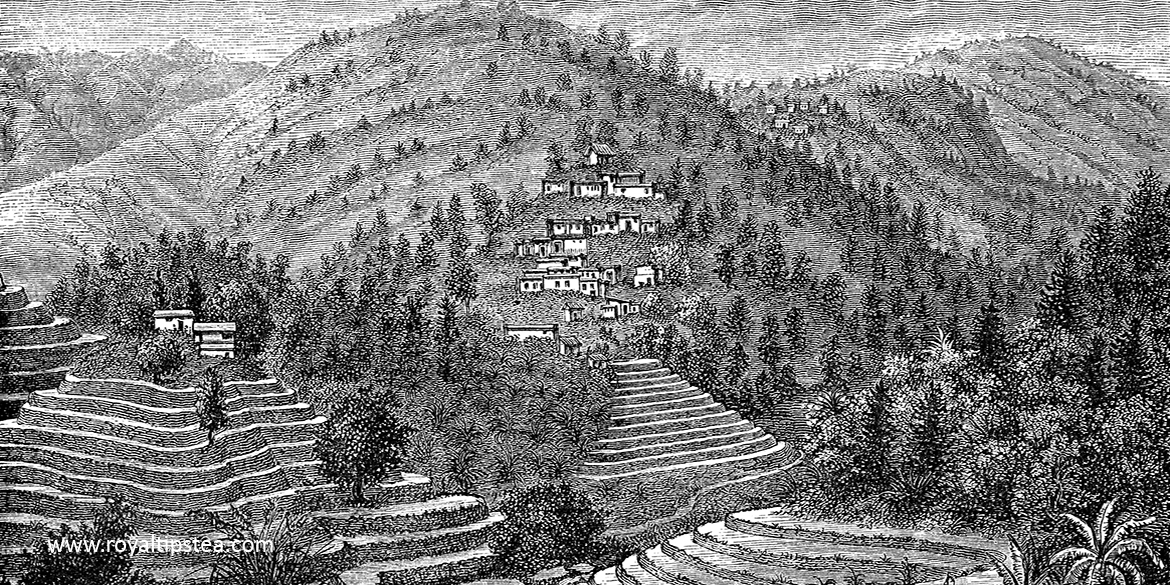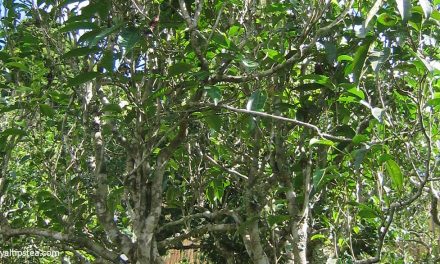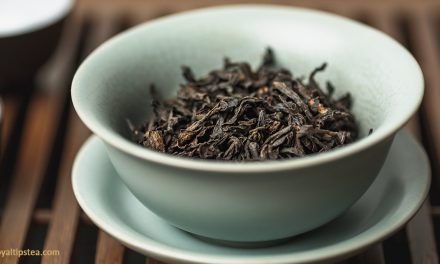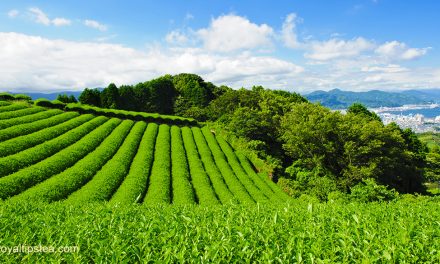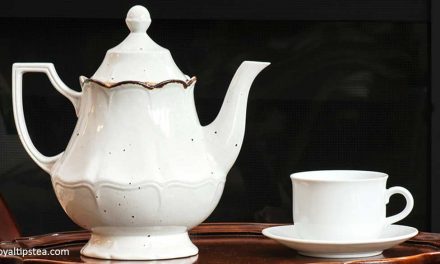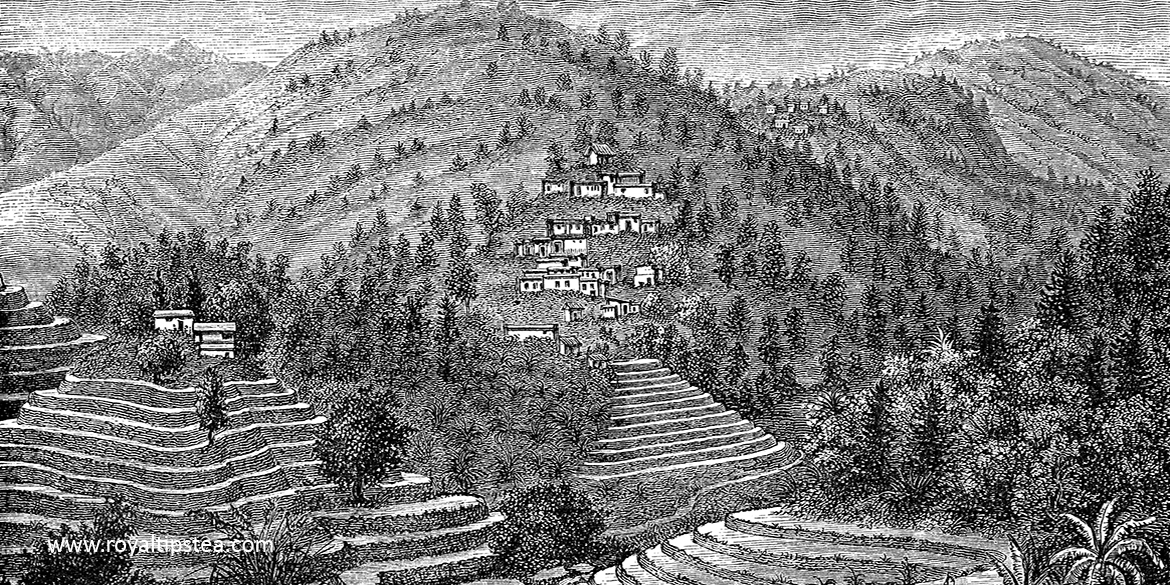
The tea plant, Camellia sinensis, first grew in China’s south western province of Yunnan and in North Vietnam, Northern Laos, Myanmar (formerly Burma), and North East India, that lie to the south and west. Plants do not recognize national borders but thrive where the local conditions suit their needs, and the tea plant found the sub-tropical warmth and humidity that it loves in the Himalayan foothills that are home to those regions.
The benefits of drinking tea are said to have been discovered in around 2737 BC when the herbalist Shen Nong was seated one day under a tree, boiling up some water that he intended to use for infusing different plants. As he waited for the water to come to the boil, the breeze caused a few leaves to drift down into the water from an overhanging branch and Shen Nong liked the aroma that rose from his cauldron. He decided to try the brew, enjoyed the taste, and found himself refreshed, able to stay awake and focused for a long time. Of course, the tree under which he was sitting was a wild tea tree and when he had carried out more experiments he decided that an infusion made from the leaves of this tree were of great benefit. Another story tells how he poisoned himself one day by tasting a harmful plant and fell into a coma, but as he lay unconscious under a wild tea tree, dew collected on the leaves and dripped down into his mouth, reviving him and restoring him to full health.
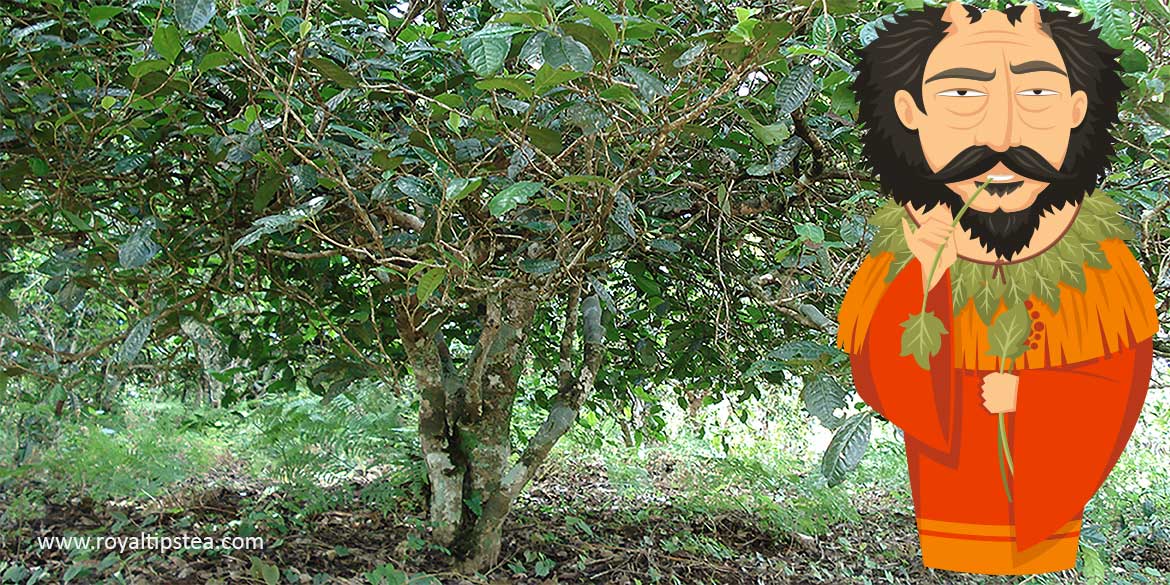
Making tea from wild tea trees
Once the health benefits of drinking tea had been recognized, tea trees that grew in the forests of Yunnan and Sichuan were chopped down and the fresh tea leaves were stepped in hot water. But the Chinese soon realised that if they continued to chop down all the wild tea trees, soon there would be no tea plants left and so they learned to cultivate the plants and to dry the leaves in order to have a stock through the year. To preserve the green leaves, they were first steamed to stop them from oxidizing, then they were compressed into cakes or balls and dried. For brewing, the cakes of tea were baked, broken into small pieces, and infused in boiling water with spices and onions. Nowadays, the tea leaves are compressed into cakes to become Pu-erh, a type of loose leaf tea that is fermented with the help of microbes.
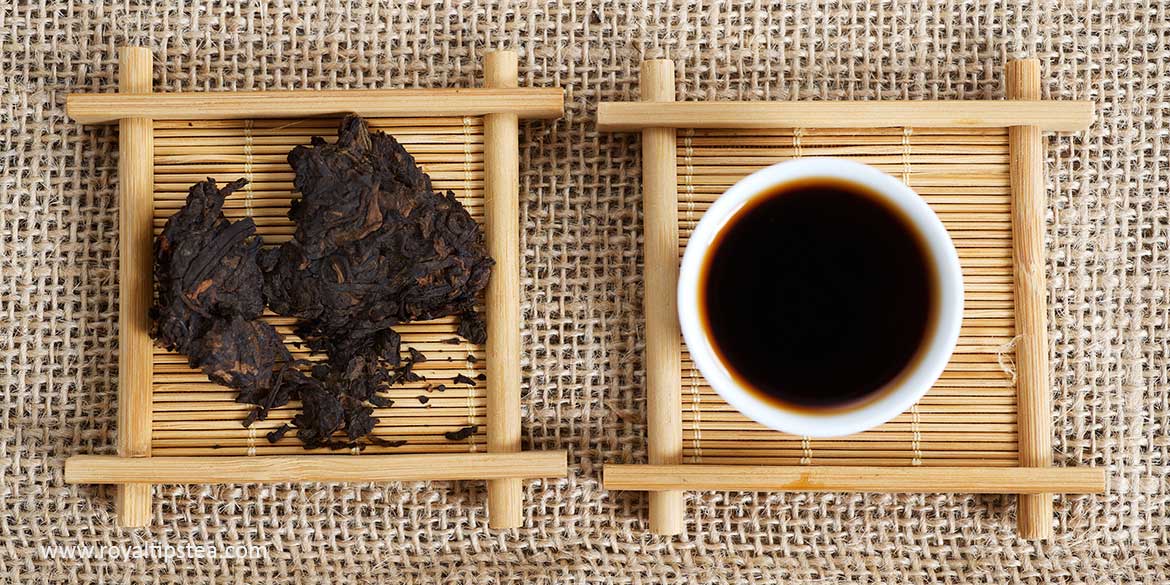
Where does the word “tea” comes from?
The Chinese character ‘cha’ was adopted in the 3rd century AD to mean both the plant and the beverage, but the name went through many guises in different languages until botanists settled on Camellia sinensis (Chinese Camellia) in the early 19th century. In 1712, the German botanist Englebert Kaempfer called it Theae Japonensis; in 1753, Swedish botanist Carl Linnaeus named it Thea sinensis but then reclassified the one plant as two different species which he called Thea viridis (which he believed was used to make green tea) and Thea bohea (which he thought was used to make black tea). Then, in 1818, English botanist Robert Sweet reclassified all the Thea species as Camellias. And eventually in 1905, it became Camellia sinensis.
Today, all around the world, the different words for tea can be traced back to their Chinese origins. Over the centuries, as tea was traded out of China and along the Silk Road and other trade routes, anyone who bought their tea from Cantonese or Mandarin speakers adopted the word “chá”. But in Fujian province, Dutch and British traders traded with people who spoke the local Amoy dialect, and adopted the Amoy word “tê”. So today, in different languages those two original names have become tea in English, thé in French, tè in Italian, tee in German, thee in Dutch, té in Spanish, etc; and chá in Portuguese, chay in Hindi, çay in Turkish, etc.

